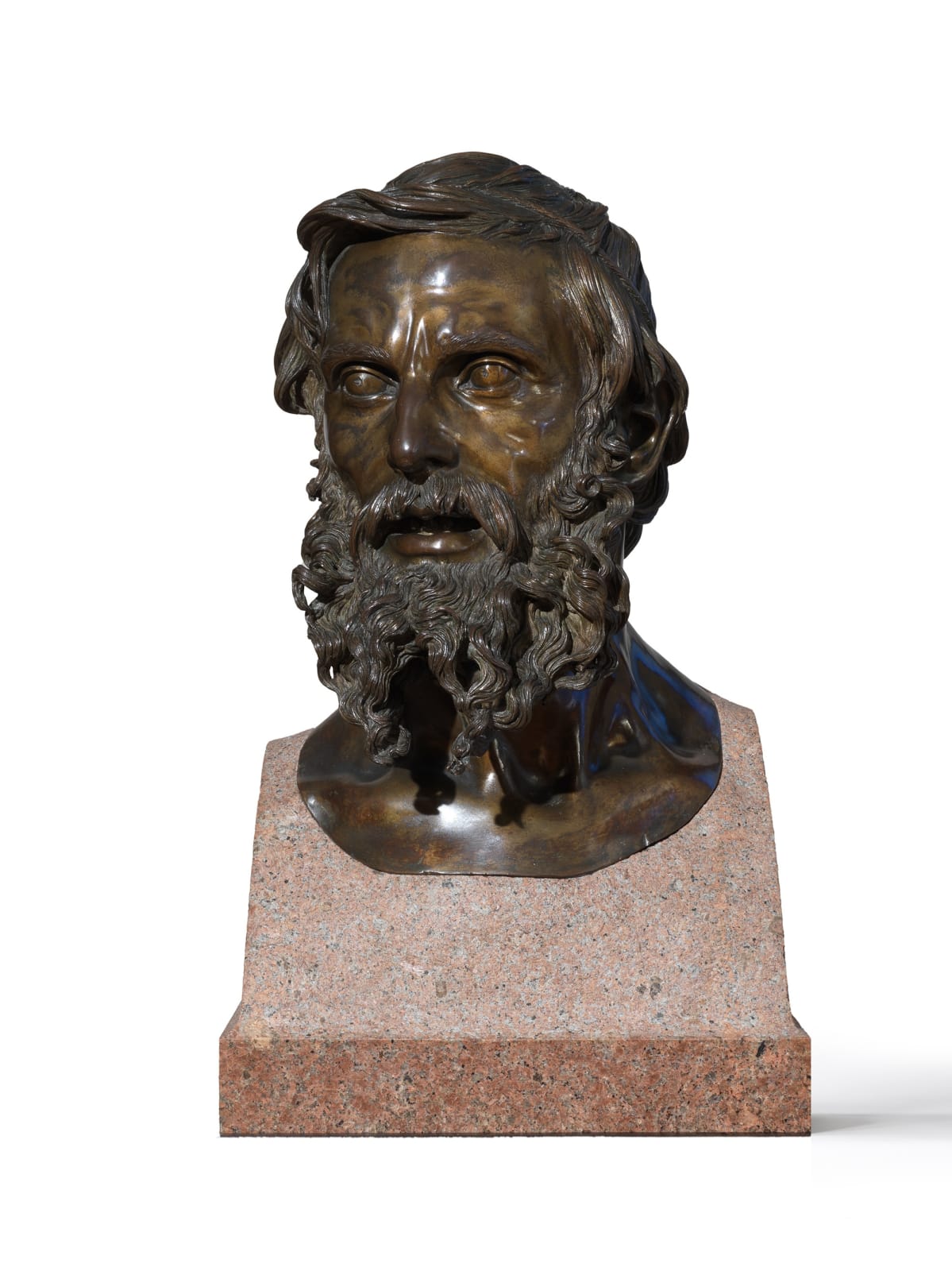
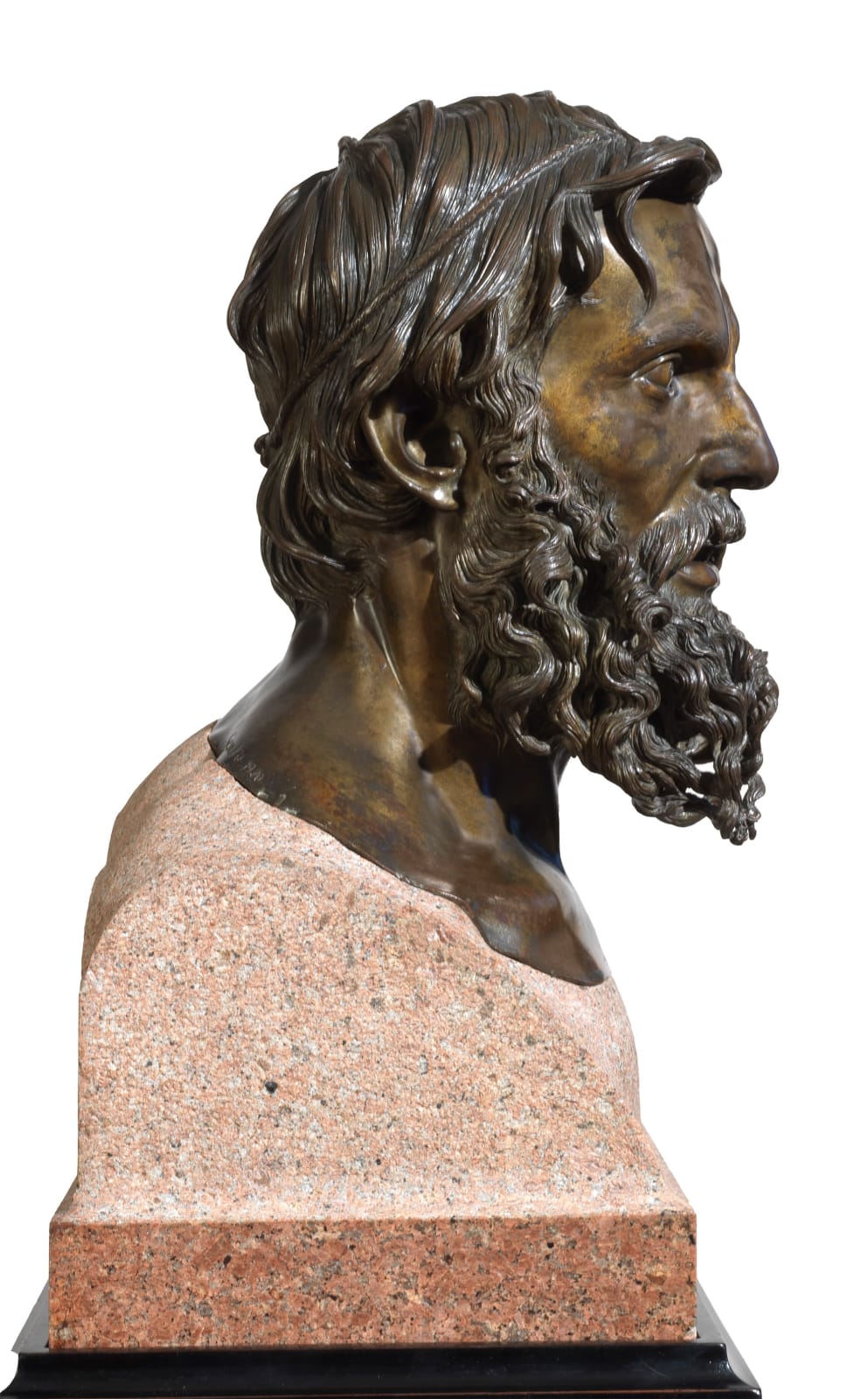
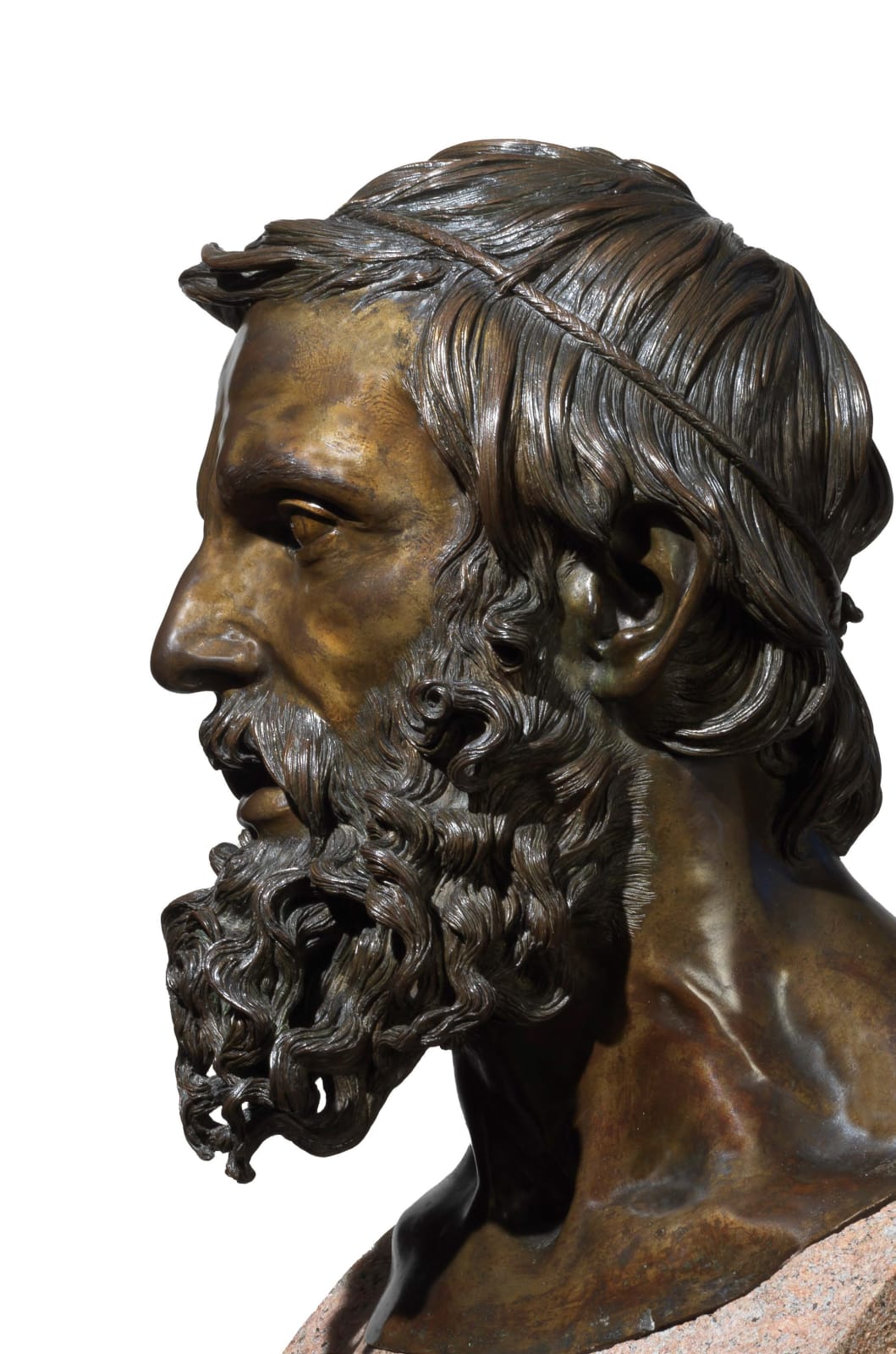
VINCENZO GEMITO NAPLES, 1852-1929
113 cm high overall
Further images
Provenance
Acquired from the artist (or possibly commissioned?) by Bianca and Giuseppe Falchi in 1920/1; Bianca and Giuseppe Falchi collection, Naples.
Literature
COMPARATIVE LITERATURE:
O.Morisani, Vita di Gemito, Naples, 1936
A.Schettini, Gemito, Milan, 1944
Spoletto, Palazzo Racani Arroni, Temi di Vincenzo Gemito, 2 Jul.-3 Spet. 1989, B.Mantura ed.
M.S.de Martinis, Gemito, Rome, 1993
K.McArthur & K.Ganz, Vincenzo Gemito (1852-1929) Drawings & Sculpture in Naples and Rome, New York, 2000
F.Licht, A Chisel and a Brush, Vincenzo Gemito (1852-1929)/ Antonio Mancini (1852-1930)
Italian Art from the Gilgore Collection, Naples, 2000
E.Bianchi, ‘Gemito, Vincenzo,’ in Dizionario Biografico degli Italiani, Vol.53, 2000
G.Nocentini, Vincenzo Gemito: sculture e disegni, Arezzo, 2001
Naples, Museo Nazionale e Real Bosco di Capodimonte, Gemito, dalla scultura al disegno, 10
Sept.-15 Nov.2020, J.L.Champion, M.T.Contarini & C.Romano eds.
Pescara, Museo dell’Ottocento, Antonio Mancini/ Vincenzo Gemito, 14Oct.2023-11 Mar.2024,
M.Carrera, C.Sisi & I.Valente eds.
Seven years after Vincenzo Gemito’s death in 1929, his biographer, Ottavio Morisani, became the first to recount that the sculptor’s bronze Philosopher was conceived in late 1882/ early 1883 as a proof by the artist that there was someone alive capable of modelling with equal vigour a bust in the style of the ancient Roman bronze Seneca (fig.1).
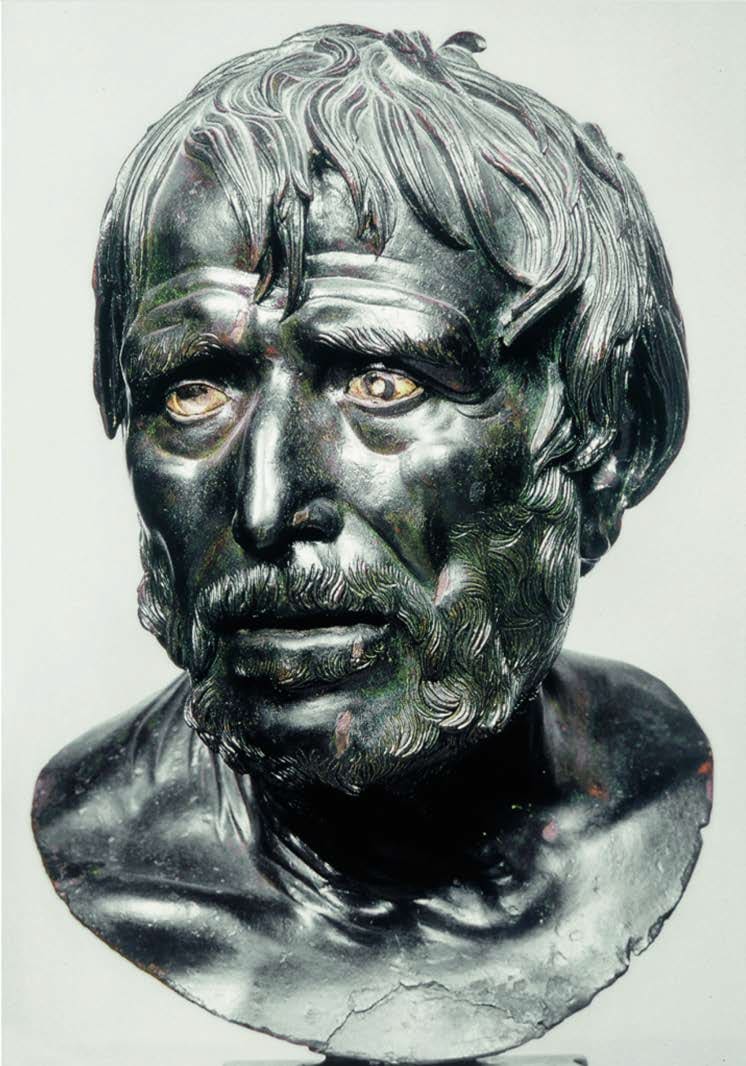
Fig.1
Rome, 1st century BCE/ AD, Pseudo- Seneca
Bronze, from the Villa of the Papyri, Herculaneum, now Museo Archeologico Nazionale, Naples
Gemito came to know the Seneca from his frequent visits to the Museo Archaeologico Nazionale, Naples, and it was one of many works that he and his artist friends tirelessly studied in their early careers. The result of the exercise that Morisani referred to - which is the bronze today in the Museo Nazionale e Real Bosco di Capodimonte, Naples (fig.2) - was so successful that, with it, Gemito won a gold medal for sculpture at the Exposition Universelle in Paris in 1900. Yet, despite the high acclaim it received, Gemito abandoned the composition until 1919.
The version presented here - cast just one year later – and on the international market for the very first time, is arguably the finest known to have ever appeared on the market, as well as the most unique: unlike the innumerable other versions, this one is signed and dated ‘1920’ and is presented on a pink granite herm as well as its original ebonised wood pedestal rather than an integral bronze socle.
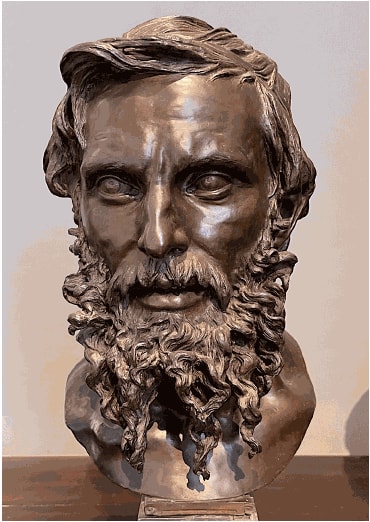
Fig.2
Vincenzo Gemito, Philosopher, 1883
Bronze, Museo Nazionale e Real Bosco di Capodimonte, Naples
On July 17th, 1852 a one day old child was abandoned at the Foundling Hospital of Naples. It was christened Vincenzo Genito but a clerical error led to him being called Gemito instead.
In 1877, aged 25, Gemito travelled to Paris determined to make his mark. That same year he caused a scandal at the Salon by presenting his life-size figure of the Fisherboy, today in the Museo Nazionale del Bargello, Florence. The realism – or, ‘ugliness’ as many thought of it at the time - of the naked boy precariously balanced on a rock and removing a hook from the fish’s mouth was shocking and unlike anything the Parisian masses had seen until this point, yet it drew in countless visitors, newspaper critics, as well as fame and commissions for the artist (3).
Despite this, Gemito remained poor, and with his muse (and girlfriend), Mathilde Duffaud suffering from tuberculosis, he hurriedly returned to Naples in January 1880. Duffaud died the following April and thus began the first of Gemito’s many psychological crises. A brief moment of respite came within a year after he met Anna Cutolo, who was modelling for Domenico Morelli, and quickly became his model, his muse and - in 1882 - his wife.
Anna was profoundly devoted to her husband and took great care of him during the terrible years in which he lived locked in a room, either sitting in a corner or lying on the floor. When moments of lucidity came, he drew and on occasions even modelled in wax and terracotta. On two very rare occasions he even picked up the sculptor’s chisel to carve two marble portraits of his wife.
Between 1883 and 1886, with the help of his Belgian patron the Baron de Mesnil, he set up his own foundry on the via Mergellina, Naples with the aim of reviving the lost-wax process for casting bronzes. It was with this backdrop that Gemito set to work on the first version of the Philosopher, which was based on his step-father and assistant in the foundry, Francesco Jadicicco, known as ‘Masto Ciccio’ (fig.3).
In 1887 Gemito was commissioned to create a full-length marble statue of Charles V for the façade of the Palazzo Reale in Naples. The combination of carving in marble, which was his least preferred medium, and the fact he was committed to carving the portrait of a historical figure rather than a work of art based on a living person, caused him enormous heartache, and resulted in his second - and most profound - breakdown that would last nearly 22 years.
During that time, he lived in self-imposed isolation in his apartment, though he also spent periods of confinement in a psychiatric hospital suffering from delirium and hallucinations. Though he continued working, he abandoned his sculptor’s tools and concentrated on drawing hundreds of unique and powerful works on paper that somehow kept him in contact with reality.
We have little evidence as to the effect on him of Anna’s death in 1906, but we know that he emerged from his sequestration in 1909. As Alfredo Schettini - another of his biographers - observed:
In quel periodo, nel 1909, Gemito in tuba e in finanziera, con la rosetta della Legion d’onore all’occhiello, la pipetta di radica in una mano e nell’altra il bastone che aveva per manico un piede di bronzo dell’"Acquaiuolo", usciva la prima volta dopo i diciott’anni di volontaria prigionia, per recarsi in visita ufficiale dai duchi d’Aosta nella Reggia di Capodimonte.
(op.cit., 1944, p.16)4
Thereafter, he returned to work and focused once more on the modelling of waxes and terracottas, as well as the casting of small-scale works in silver, gold and bronze, always in reverence to the great masters of Antiquity. This was a period of intense activity in which he exhibited works nationally - and internationally – and created some of his greatest pieces, including, his breathtaking masterpiece the Medusa (1911) today in the J.P.Getty Museum, Malibu (fig.4).
Gemito died in Naples on March 1st, 1929. He had been working assiduously in his foundry the days before and, when he eventually returned home, fell into a deep delirium from which he never awoke.
Join the mailing list
Subscribe to our newsletter to receive all the news about exhibitions, fairs and new acquisitions!




